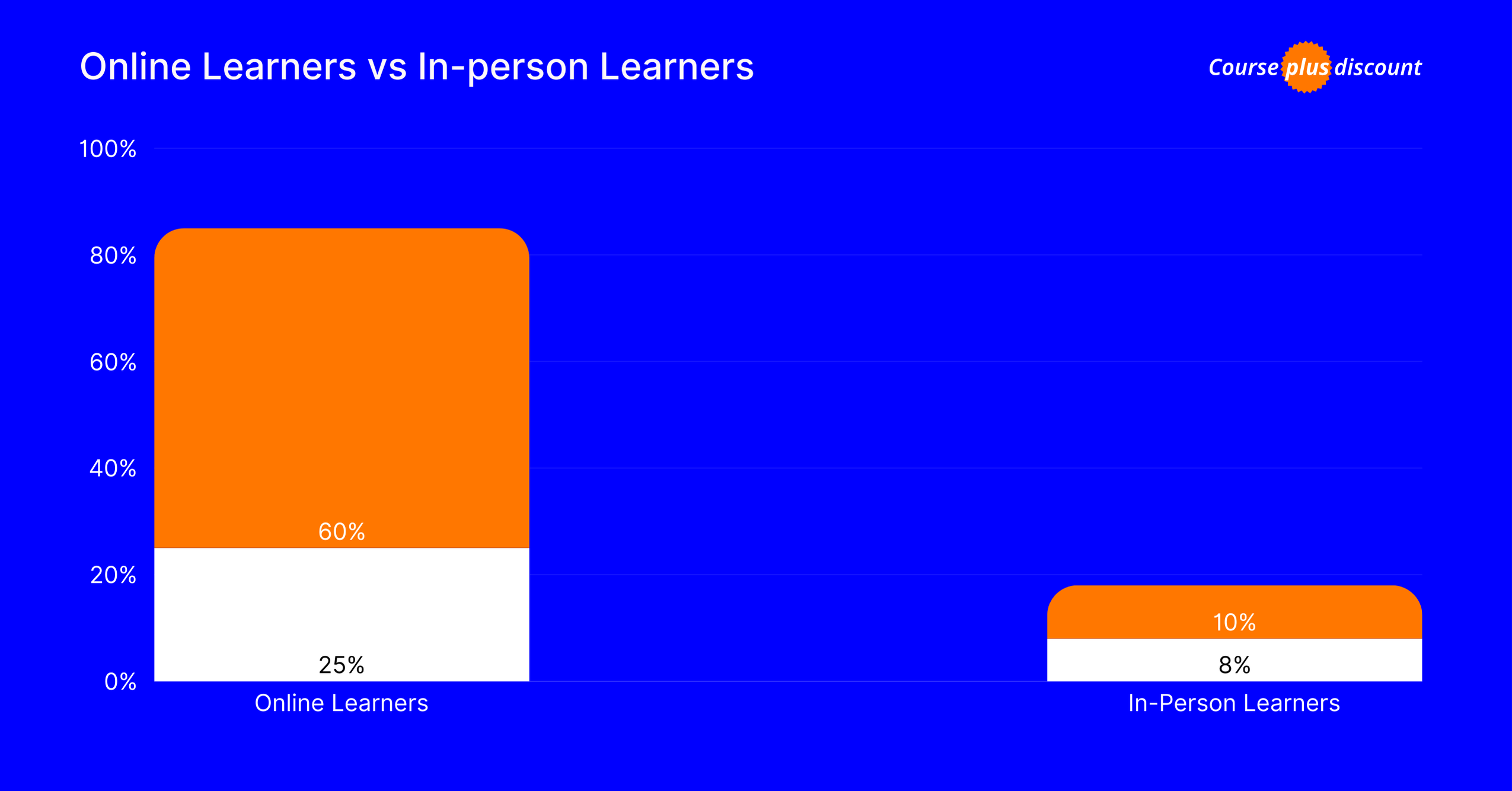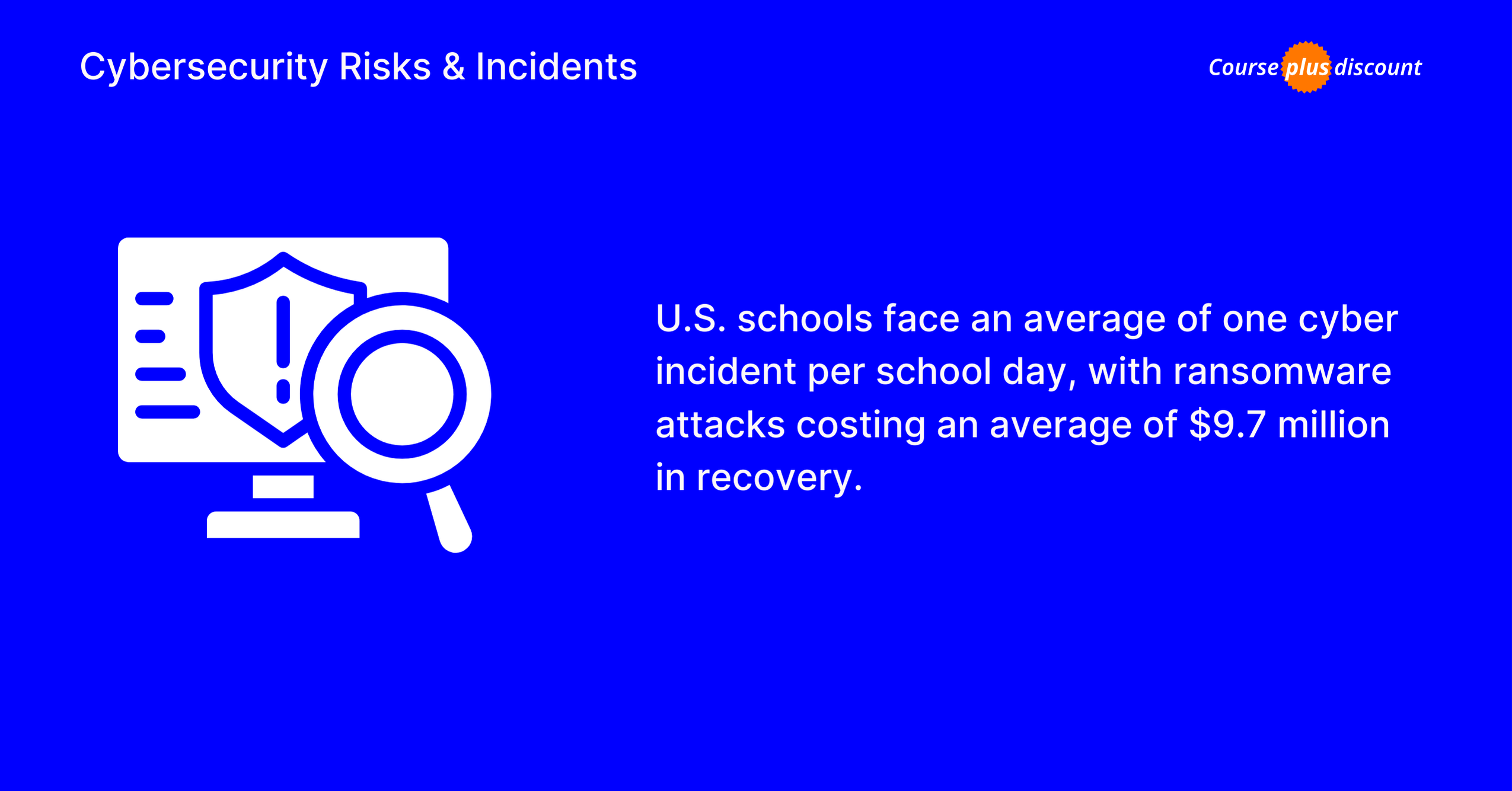The eLearning statistics related to this haveindustry has seen rapid growth, with projections indicating a market worth over $325 billion by 2025. This expansion is fueled by increasing student demand, corporate investments, and the shift toward flexible, online learning options.
From K-12 education to corporate training, eLearning is transforming how knowledge is delivered and consumed.
This article highlights the top facts and statistics that showcase the rise of eLearning, its impact on education, and its growing presence in both academic and professional sectors.
Top Picks: 10 Facts & Statistics On eLearning
- The global e-learning market is projected to reach $325 billion by 2025, growing at a CAGR of 7% from 2020 to 2025, signaling robust industry expansion. (NCES)
- The e-learning market is expected to grow to $336.98 billion by 2026, with a CAGR of 9.1% from 2018 to 2026. (Syngene Research)
- 96% satisfaction rate was reported by online college graduates, who would recommend eLearning to others. (Brighterstridesaba)
- 93% of graduates said their online degree will result in a positive return on investment. (Best Colleges)
- 70% of students say eLearning is better than traditional classroom learning. (Devlin Peck)
- 49% of students have completed some sort of eLearning. (Devlin Peck)
- The eLearning industry is booming and is projected to be worth over $370 billion by 2026. (Devlin Peck)
- eLearning significantly boosts efficiency by reducing learning time by 40% to 60%. (Devlin Peck)
- 67% of American college students now use mobile devices for all or some course-related activities, indicating a significant shift from laptops to mobile-based learning. (Research)
- 90% of companies now offer digital learning opportunities for employees. (LinkedIn Learning Report 2024)
Growth Of eLearning
- 66 universities in the USA offer 4-year and 2-year online degree programs in 2024. (NCES)
- 42% of students cited affordability as the primary reason for choosing online degree programs in 2023. (Statista)
- Organizations using e-learning reported a 42% increase in employee productivity. (NCES)
- 9 in 10 companies now offer digital learning opportunities.
- 40% of organizations have prioritized career development initiatives using eLearning. (LinkedIn Learning Report 2024)
K-12 eLearning Statistics
- Online education market value in K-12 is expected to reach $2.79 trillion by the end of 2024. (Grand View Research)
- The K-12 eLearning market is projected to grow at a rate of 12.5% annually, reaching $5.66 trillion by 2030. (Grand View Research)
- In 2023, U.S. K-12 schools used an average of 2,500 edtech tools per district, compared to 895 tools in the 2018-2019 school year.
- Over 50% of K-12 teachers stated that edtech enhances self-paced learning and accessibility. (Statista)
- 47% of school administrators said their schools planned to increase spending on eLearning programs. (Best Colleges)
- 98% of universities have shifted to offer online courses
- eLearning users are expected to grow to nearly 60 million people. (Devlin Peck)
Statistics Of eLearning Vs Classroom
- In 2024, 50% of institutions noted faster enrollment growth for online programs compared to on-campus ones, and 60% reported online classes filling first. (Quality Matters)

- Online learners retain 25% to 60% of the material, compared to just 8% to 10% for in-person learners. (NCES)
- Study time is decreased by as much as 60% when done online.
- eLearning and training can improve employee performance by 15% to 25%. (Devlin Peck)
- 75% of undergraduates and 71% of graduates took at least one course online.
- In 2022, 10.1 million college students (54%) took at least one class online
- That’s a slight decrease from 2021 when 11.2 million college students (60%) took at least one class online. (Best Colleges)
- Massive Open Online Courses (MOOCs) have seen exponential growth, increasing their learner base from 300,000 to 220 million between 2011 and 2021, showcasing the accessibility and scalability of online education. (BAU)
- In 2022, 43% of college students believed online instruction was worse than in-person learning. (Statista)
- 34% of respondents found eLearning more engaging than traditional classroom settings. (BAU)
- Over 562,659 students were enrolled in virtual schools across the U.S. in the 2022-2023 academic year, with secondary and high school students being the largest group at 105,676. (NCES)
Do Students Learn Better In Person Or Online?
- 60% of online learners reported improved critical thinking skills as a result of eLearning. (BAU)
- In the U.S., 52% of graduate students found their online college-level education to provide a better learning experience than traditional classroom settings. (Research)
- 63% of students opt for online courses because they allow them to balance other responsibilities and commitments, highlighting the flexibility that eLearning offers compared to traditional classroom settings. (BAU)
- eLearning is the fastest-growing market in the online education industry, with a 900% increase since its creation in 2000.
- eLearning will have a 9.1% compound annual growth rate by 2026. (Devlin Peck)
- 75% (Three-quarters ) of students stated that online education was better than or equal to in-person learning in 2022, a 5% growth in online education statistics from the previous year. (Brighterstridesaba)
- eLearning has been shown to enhance retention rates, with studies indicating an increase of 25% to 60% compared to traditional face-to-face learning, showcasing its potential to improve learning outcomes. (NCES)
Drawbacks of eLearning
- 30% of online program graduates said they wish they would have done more research about cost and financial aid. (Best Colleges)

- U.S. schools face an average of one cyber incident per school day, with ransomware attacks costing an average of $9.7 million in recovery. (K12 Six)
- Only 47% of faculty members received training for online teaching, which has impacted student outcomes. (BAU)
Statistics Of eLearning During Covid-19
- 52% of institutions reported that online programs generate net revenue in 2024, up from 47% in 2020. (Quality Matters)
- Online course enrollments increased by 300% globally during the pandemic. (NCES)
- Since the pandemic, 150,000 schools worldwide have integrated eLearning into their curriculum. (Astute Analytica)
- 10.1 million college students (54%) took at least one class online, showcasing how much has e Learning increased since covid-19
- 30% of students attended their classes entirely online post-COVID, reflecting a growing shift toward virtual online education. (Brighterstridesaba)
- In a 2021 survey, 76% of students expressed interest in more online course options, while 64% favored a hybrid model combining in-person and eLearning. (Bay View Analytics)
e Learning: Market Statistics
- The eLearning market is projected to reach 73.8 million users by the end of 2024. (Market Data Forecast)
- The global e-learning market is set to reach a staggering $400 billion by 2026, with the U.S. leading the charge. (Statista)
- An average user spends $210 on online education in 2024.
- Online education is expected to generate $185.20 billion in 2024, growing at an annual rate of 8.56% until 2029
- The Online University Education segment alone is expected to generate $120.70 billion in 2024
- The U.S. will lead the global online education market, generating $87.51 billion in 2024
- Nearly 15% of the world’s population (1.121 billion users) is expected to engage in eLearning by 2024. (Statista)
